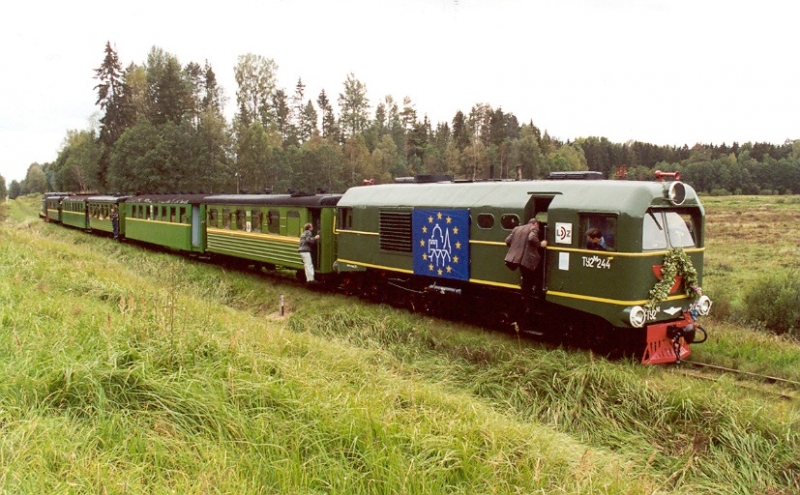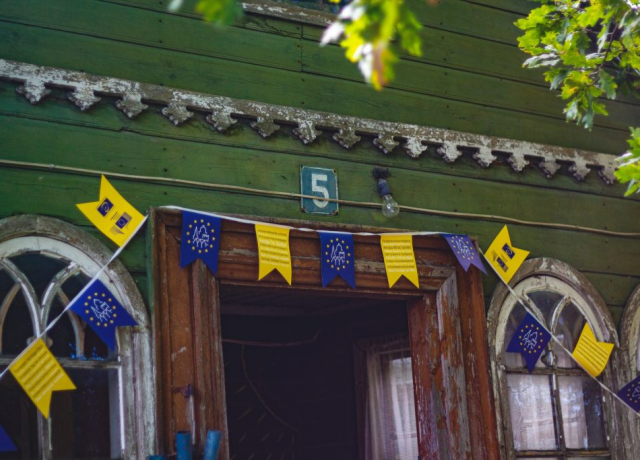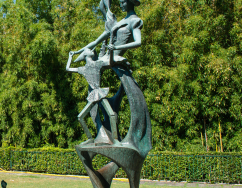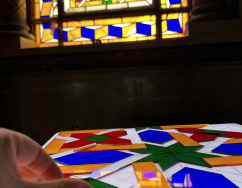European Heritage Days Article:
Essential Guidance for Cultural Heritage Event Planners: Embracing Routes, Networks, and Connections
European Heritage Days Article:
Essential Guidance for Cultural Heritage Event Planners: Embracing Routes, Networks, and Connections
Photo credits: Žagarės Kultūros Centras, Lithuania
The brochure for organisers planning events for the Heritage of Routes, Networks and Connections theme has now been published. For more ideas and inspiration on how to get started with planning events for 2024, here are some top tips about how to approach the theme.
Fostering Collaborations: Building Networks and Partnerships in Cultural Heritage Events
By taking part in European Heritage Days, both organisers and visitors are helping to make new connections! Think about building these partnerships by contacting local community organisations to get involved in running events such as tours, or getting in touch with overseas groups, societies and associations to speak about how they recognise aspects of their heritage in your area. Cross-cultural connections can also be fostered through exchange visits for performing artists or educational groups. Another way to build connections might be to get involved with events being created across Europe such as marking of the 70th anniversary of the European Cultural Convention happening in 2024. Creating new opportunities for connections and relationships to form is not only a meaningful way to get involved in the theme, but can also enrich your programme of events with shared histories and personal stories.
Think Large and Small: From Local to International Cultural Heritage Celebrations
European Heritage Days takes place across Europe exploring shared culture and creating opportunities for cross-cultural dialogue across borders is always encouraged. This year’s theme presents ways to explore routes across countries, such as for trade and pilgrimage, as well as celebrating other international connections such as town twinning programmes. But routes come in all sizes, and local connections such as underground transport networks within a city or public rights of way across the countryside are also a good way to think about the theme. So, when planning events this year, think both locally as well as nationally and internationally for inspiration.
Discovering Cultural Ties All Around Us: Exploring Connections in Our Daily Lives and Environments
The influences of both historic and contemporary connections can be seen all around us and provide reminders of our shared heritage. Everyday examples include aspects of the built environment, such as the place names and street signs which have their roots in other parts of the world, while architecture is another feature of townscapes often reflecting the movement and evolution of design styles. Other connections can also be found in the living heritage we interact with in our daily lives such as sports which can bring people together, while restaurants serving international cuisine can be a good starting point for events exploring the stories of migration and journeys. Think about planning events based on everyday interactions with both tangible and intangible heritage to highlight the theme and its relevance.

Tracing Historical Pathways: Explore Physical Routes as Cultural Heritage Links
One of the key elements of this year’s theme is looking at the physical routes which have connected cultures and societies throughout history. From ancient roads and medieval trade routes through to more recent travel for leisure, the movement of people and goods has helped shape and share ideas, aesthetics and cultural practices across Europe. When planning events, think about the sites which can be helpful in explaining how your area has connected to other places both in the past and present. For example, historic routes may still be in use, or there may be archaeological evidence of them in museum collections or even through ongoing archaeological digs. And as well as land, waterways such as maritime routes, rivers and canals can also be explored, as well as more recent connections available through rail networks and air travel. Think about the transport networks of your area, whether that’s a historic port or a modern airport and see what these routes can tell us about how your area has developed and continues to connect with other areas.
Plan thematically: From Artistic Influences to Historical Eras of Cultural Heritage
Thematic routes and connections are an important part of the theme. The arts such as music and literature, can provide inspiration and help to highlight shared identity, while language evolution, dialects, and multilingualism play an important role in connecting communities. Approaching events thematically could also mean looking at the impact and shared culture brought by historic ages such as the Vikings or Romans to find connections through time, or to associate geographically dispersed places which are linked through World Heritage Site or European Heritage Label status. Another helpful resource for thematic ideas are the Cultural Routes of the Council of Europe which includes 47 maps based around themes linking more than three countries covering a range of topics such as ceramics, historic gardens and Jewish heritage.
Bridging History and Modernity: Integrating Historic and Contemporary Routes in Cultural Heritage
From ancient buildings to former trade routes, historic examples exploring this year’s theme are plentiful. But routes, networks and connections continue to be created and develop in the modern world, and these too can provide inspiration for events. New routes and connections are constantly created as people travel and keep the value and meaning of their heritage alive in new places and communities. Meanwhile, digital technologies are increasingly providing new ways of connecting and sharing with each other, and through platforms such as social media we are networked like never before. Exploring contemporary examples and connecting heritage with current issues and popular culture is a great way to ensure the theme resonates with a wide audience.
Check out the brochure and other resources - Comprehensive Resources for Heritage Events: Routes, Networks, and Connections Brochure
We hope this article has been helpful in getting you thinking about this year’s theme. There is plenty more support and advice available in our newly published Routes, Networks and Connections Brochure. As well as further discussion of the theme and background, the brochure contains 80 specific event ideas from recreating ancient trade markets and historical diplomatic meetings, to walks along forgotten routes and exhibitions showcasing the most widely travelled objects in museum collections. The brochure also lists a number of recommended external resources across categories of youth, local community organisations and European networks which can provide further context as well as opportunities to build partnerships.


